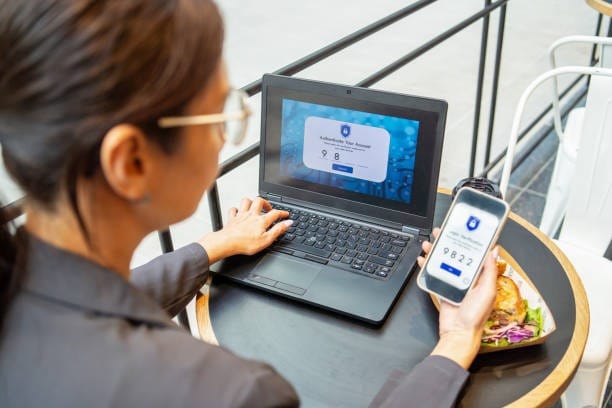Introduction
Businesses need to form a balance between user engagement and user retention with the right strategy to bring revenue. It is possible when your product can form a relationship with the users.
The user’s first experience with your product is the reason for their next visit, which leads to more engagement. When the user pays more visits and finds your product or service useful. It results in more buying. Because of the trust and previous experience with the product, the users reach you again to find solutions, which is retention.
So, we need to know the relation between user engagement and user retention and the best practices to make them complement each other to form an effective marketing strategy.
What is User Engagement?
User engagement is the measure of users performing meaningful actions on your product, website, or application. It includes page view time, checking products, writing reviews, buy products, and more. Engaged customers show loyalty, contribute revenue, and brand promotion than the average customer. You can engage users with the best good customer experience, personalize communication, improve product quality, and more.
For example, if we consider an e-commerce website. A user gets to know about a product on your site through social media, visits your site, checks the product, and purchases.
In the above scenario, users not only visit your site but carry out activities that bring revenue to your business.
Digital marketers can follow user engagement strategies and KPIs for their business to improve engagement rates.
What is User Retention?
A 5% increase in retention has the potential to increase profitability by 25% to 95%. User retention is nurturing one-time visitors and converting them into repeat customers. It increases the user's lifetime value with your brand and boosts revenue. Businesses need to check the average customer retention rate by focusing on the KPIs. We lay down much effort to get new customers so we should make sure to stay with us for the long run.
For instance, consider the Zoho projects, an effective project management tool that helps teams to plan, track and complete projects. If a users visit regularly to check the status of the project and do not take any further actions like assigning tasks or reviewing, that’s retention.
How does User Engagement Relate to User Retention?
Strong engagement increases the repeat customers which is the backbone of customer retention. In the same way, greater retention of existing users facilitates user engagement. If you can expertise a perfect strategy for one factor then you can see success with the other one.
So, retention is bringing back the customers, which creates an opportunity for engagement. Also, a high level of engagement increases the user retention rate.
For example, Amazon retains users with product recommendations based on their previous purchases and makes the users engage with product pages. When a user likes your product then tends to come back to the website without any effort.
Best Practices to Improve User Engagement and Retention
As user engagement and retention are interrelated to each other, you don’t need to work on them individually. Here are a few best practices to follow that can help you to craft the perfect strategy to improve both at the same time.
Reach Customers On Time
Reaching customers for assisting with your product installation, usage, and support service is a great way to improve user engagement and retention rates. These days users are considering customer service as deciding factor to choose a brand. Businesses observe churn rates during the onboarding phase because of high response time. You can make use of automated emails and notifications to assist the users in their onboarding journey and not make them left out. Use online chats like Drift, Freshchat, Zendesk, etc to address audiences anytime.
Make Use of Subscriber's Data
You can use subscriber’s data to reach with recommendations, subscriptions, offers, or support services. You can divide the subscribers according to their data to reach them. It can include conditions like country, state, IP address, subscription dates, and more.
For Example, an OTT platform like Netflix can divide users as per subscription data to send renewal alerts. It can use Trigger push notifications to send push notifications monthly or yearly. It helps to improve user engagement without losing subscribers.
The above renewal push notification is from the OTT platform for their subscribers.
Segment Customers To Target
Segmentation can work as a powerful tool to boost both user engagement and retention. Marketers perform research on subscribers to segment. It helps to prepare perfect marketing strategies that perform better than competitors.
Push notifications tools are a great way to implement segmentation in marketing campaigns and engage more users. You can segment audiences in terms of country, gender, state, browser, day of the week, hour of day, and more.
For Instance, a beauty store is targeting to retain users who are inactive for a while. In this case, they can use the segmentation feature of the push notification tool. Marketers can divide the users as per the last visit date to push notifications.
An example of a beauty store user retention push notification used to engage inactive users.
Marketers can analyze the notification performance with metrics like views, clicks, and open rates per hour. It helps to distinguish high and low profitability segments. With all these inputs you can strategize a user retention plan to attract audiences.
Re-engage Users with Personalized Notifications
Every customer is different from others. It can be relative to the services usage, subscriptions, page visits, payment choices, and more. It is important to focus on every type of user and increase their loyalty towards your business. So, personalized push notifications are very effective to encourage visits to a website.
For Example, Let us say a travel website has observed more users visits on Saturday and Sunday. So, to convert these visits to conversions send push notifications of exclusive offers. Marketers can use the day of week segmentation and reach the targeted audiences.
This is a push notification from a travel website trying to engage users who visit on weekends.
User engagement and retention go hand in hand to stabilize and improve revenue. Improve them both at the same time using the perfect strategy that works for your users.





